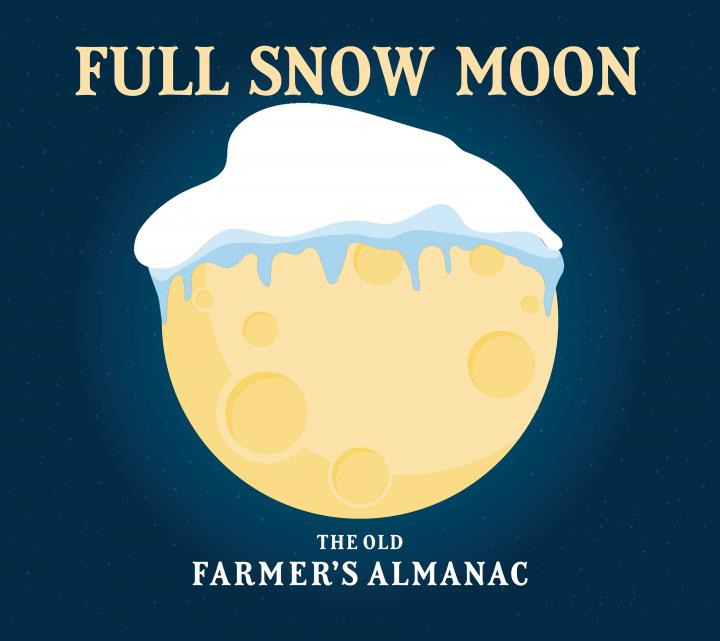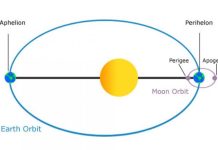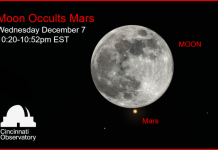Good news for sky watchers, the next full moon is set to be the biggest and brightest of the year. the “super snow moon” as it is being called, will cross the skies on Feb. 19.

While the upcoming “super snow moon” won’t be the extravagant astronomical spectacle that January’s “super blood wolf moon eclipse” was, it will be larger and brighter. If that isn’t enough, the subsequent full moon in March will also be a “supermoon,” rounding off 2019 with a total of three “supermoons.” In a given year, between two and four full moons can be classified as “supermoons.”
Now learn what to know about the upcoming “super snow moon” and what the best time is to see it.
What is the super snow moon?
A “supermoon” is when a moon is simultaneously full and at its perigee, the point in its orbit when it is closest to Earth. When this happens, the moon appears larger and brighter in the sky. The moon’s orbit is not a perfect circle, due to gravitational forces from both the sun and the Earth, and thus varies in distance from the Earth throughout the year. The point in its orbit when the moon is farthest from Earth is known as the apogee, and appears to be smaller in the sky.
The term “snow moon” is the historic name given to the second full moon of winter by certain Native American tribes in the U.S.. It is called the snow moon due to typical snowfall during this time of year. Heavy snowfall is also the reason for its alternative and more grim name, the “hunger moon.”
When can people see the super snow moon?
The moon will technically reach peak fullness next Tuesday morning, Feb. 19, 2019, at 10:54 a.m. EST, but won’t be visible to most in the U.S. at that time. Instead, you will have to wait for moonrise, which will occur between 5:30 and 6:30 p.m. local time. If you are hoping to capture a good “supermoon” photo, catching the moonrise is your best bet. Due to an optical illusion, the moon appears larger to us the closer it is to the horizon.
When is the next full moon?
The next full moon will be on March 20, and while it is also going to be a “supermoon” it won’t be quite as big as this one. And while you will have to settle for normal-sized full moons for the rest of the year, there are still a few more moon-related astronomical events to look out for this year:
July 2: If you happen to find yourself in Chile or Argentina in early July you can catch a glimpse of a total solar eclipse.
July 16: A partial lunar eclipse will be visible to people in much of Europe, Asia, and in regions of North and South America as well.
Dec. 26: The day after Christmas (also known as Boxing Day) there will be an annular solar eclipse visible in Eastern Europe, Asia and parts of Africa. An annular solar eclipse is similar to a total solar eclipse, but the moon is too far away to completely obscure the sun. As a result the eclipse looks more like a “ring of fire,” with a thicker ring of light visible in comparison to a total solar eclipse.
Keep your eyes to the sky to enjoy these next astronomical events. Enjoy!
Follow us on Facebook and Twitter or become a Patron on Patreon / donate through Paypal. Please and thank you
[Yahoo]













What is the ‘superMOon’?
the new normal.
i did catch it an hour ago above middle europe. someone were spraying the sky whole day disgustingly, but still very bright and visible.
They will all be blind….